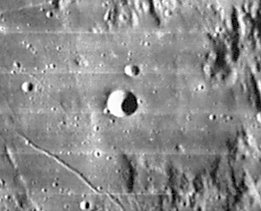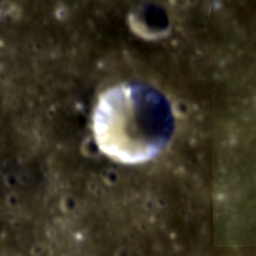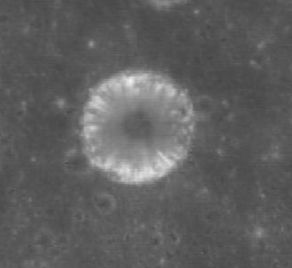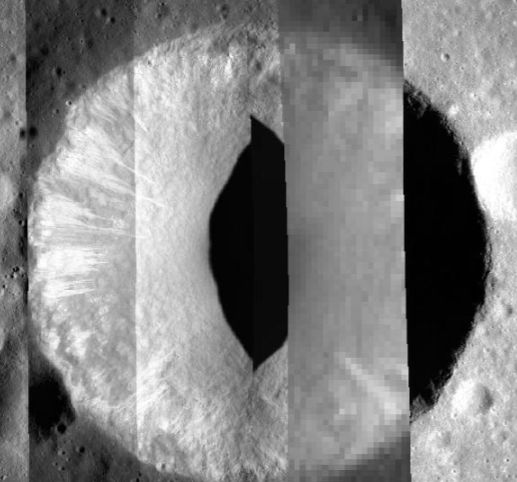Seeliger
Contents
Seeliger
|
Lat: 2.24°S, Long: 2.97°E, Diam: 8.53 km, Depth: 1.81 km, Rükl: 44 |
| LOIV 101 3 |
Clementine false color........................QM at noon ........................................QM zoom |
Images
LPOD Photo Gallery Lunar Orbiter Images Apollo Images
- Although not mentioned in the LPI's search-list of orbital Apollo photographs, bowl-shaped crater Seeliger WAS photographed by the north looking mapping/metric Fairchild camera of Apollo 16. Frame AS16-M-0840 (of REV 27) shows Seeliger about halfway between the frame's centre and right margin.
- About the same view as in AS16-M-0840 is AS16-M-1405 of REV 37, made under much higher solar illumination.
- Research orbital Apollo 16 photography: Danny Caes.
Maps
(LAC zone 77B1) LAC map Geologic map LM map AIC map
Description
- Seeliger is a bright little simple crater of classic character. The Clementine image shows that it has steep walls with a small flat floor, and surprisingly, a tiny central peak. Central peaks are rare in craters smaller than 10 km, but the image suggests that they may exist but be too small for normal detection. Notice that the color of the inner walls change from bright white to a tan hue about half way down - I wonder if that is due to layering in the target? - tychocrater Jul 15, 2007
- Indeed, as with most bowl-shaped craters the size of Seeliger', the shadow-less photographs from the LROC (Lunar Reconnaissance Orbiter) show Seeliger's bright upper parts of its inner slopes, and medium-grey at its floor. Several bright radiating "spokes" are noticeable on Seeliger's inner slopes. Alas, the LROCs WAC COLOR TEST image doesn't show the tan coloration mentioned by Charles A. Wood, because of poor resolution (the WAC COLOR TEST shows only pixels instead of a sharp looking close-up of Seeliger). - DannyCaes Jun 17, 2017
Wikipedia
Additional Information
- IAU page: Seeliger
- Depth data from Kurt Fisher database
- Arthur, 1974: 1.81 km
- Westfall, 2000: 1.81 km
- Viscardy, 1985: 1.8 km
Nomenclature
- Named for Hugo von Seeliger (1849 - December 12, 1924), a German astronomer, often considered the most important astronomer of his day. His contributions to astronomy include an explanation of the anomalous motion of the perihelion of Mercury (later one of the main tests of general relativity), a theory of novae coming from the collision of a star with a cloud of gas, and his confirmation of James Clerk Maxwell's theories of the composition of the rings of Saturn by studying variations in their albedo. Seeliger was a lifelong friend of Johann Krieger, and arranged for the completion and posthumous publication of Volume 2 of the latter's Atlas.
LPOD Articles
Bibliography
Named Featues -- Prev: Sechenov -- Next: Segers



